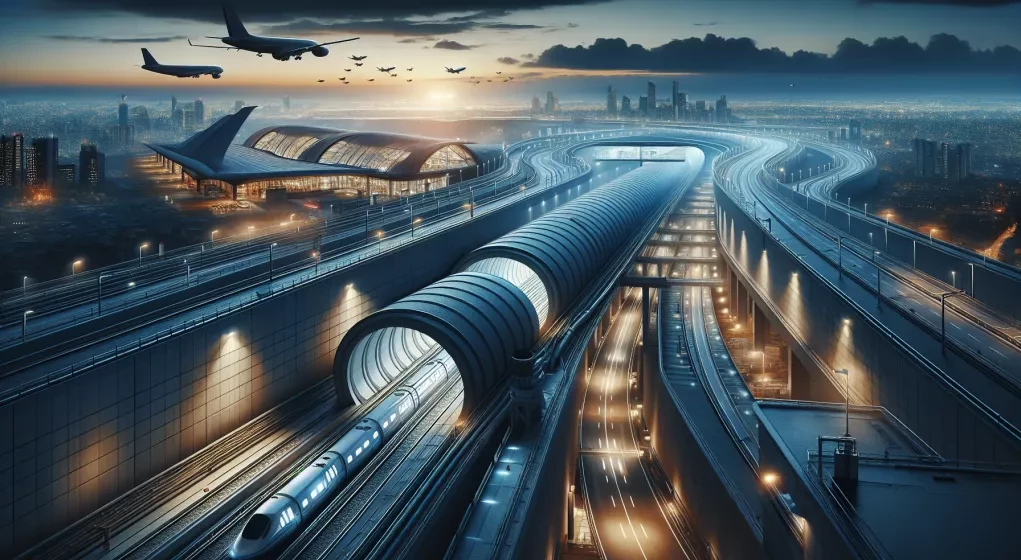Beneath the glimmering lights and ceaseless energy of the Las Vegas Strip, a new chapter in urban transportation silently forges its way: the Vegas Loop, Elon Musk’s ambitious subterranean vision, is set to stretch its steel tendrils even further. The Las Vegas Convention and Visitors Authority board, guardians of the city’s pulsating heart, have cast their votes in favor, endorsing the creation of two additional tunnels that promise to slice through the congestion above like a spade through sand.
These tunnels, affectionately dubbed “Tesla Tunnels” by both enamored locals and skeptical critics alike, will usher manned Tesla vehicles in a soundless ballet at 30 mph. This, a departure from the initial whirlwind dream of unmanned shuttles zooming at a blistering 155 mph, is still poised to redefine mobility in the tourism-soaked corridors of sin city.
Stretching over two miles beneath the vibrant artery of Paradise Road, the extended Vegas Loop seeks to connect the pulsating heart of Thomas & Mack Center to the bustling gateway of Harry Reid International Airport. This subterranean endeavor isn’t just engineering; it’s a bid to reclaim the surface streets from the brink of vehicular chaos, an answer to the siren call for an improved visitor experience.
“The project is exceptionally important to Las Vegas,” proclaims Steve Hill, the LVCVA’s CEO and president. His words reflect a hope that resounds through the city’s foundation, a promise of a future where the torrent of traffic yields to a streamlined, subterranean flow of efficiency and grace.
Yet, this bright horizon is not without its shadows. The ink had barely dried on the approval documents when the spectre of safety loomed large. A hefty $100K fine for eight “serious” violations landed on The Boring Co.’s desk less than a sun-cycle ago, the company that chisels out these dreams from the bedrock of reality. Workers bore witness, bearing chemical burns from an unforeseen communion of skin and sludge within the tunnel’s gloomy embrace.
Yet the resolve to forge on is unbroken. “They’ve addressed the OSHA violations that happened during construction projects,” Hill assures, a steadfast beacon within the storm. Safety, it seems, is a crucible in which the integrity of The Boring Co. is being tested and tempered.
The path of innovation is seldom smooth. Amongst the voices of assent, one dissent rings clear: Las Vegas Mayor and board member Caroline Goodman. Standing firm on her platform of safety and practicality, she casts her solitary ‘nay’ into the well of progress.
In a tangential yet closely knitted tale, the tides of change lap at the foundations of Allegiant Stadium, home to the gridiron gladiators, the Las Vegas Raiders. Plan in hand, officials have laid out ambitions to erect a Vegas Loop station within the confines of Lot B, a stone’s throw from the Hacienda and Polaris crossroads. But triumphs in innovation often hold hands with sacrifice: 124 to 200 parking spaces might vanish into the aeons in service to this new platform.
Rules set by the governing powers of Clark County demand 16,550 on-site parking spaces for the behemoth 65,000-capacity coliseum. Yet the present reality reflects a reduced requirement: 2,375 spaces to be exact, a nod to the vast expanses of offsite parking and the kaleidoscope of transport alternatives available.
The Raiders propose a further trimming, seeking to bring the number down to a svelte 2,175. Should the guardians of the land agree, the clock will start ticking, the stadium will have two years to breathe life into this marvel of modern transit.
This is Vegas in the throes of transformation; amid the roulette wheels and poker chips, a city burrows into the future, crafting its own narrative of ingenuity.






